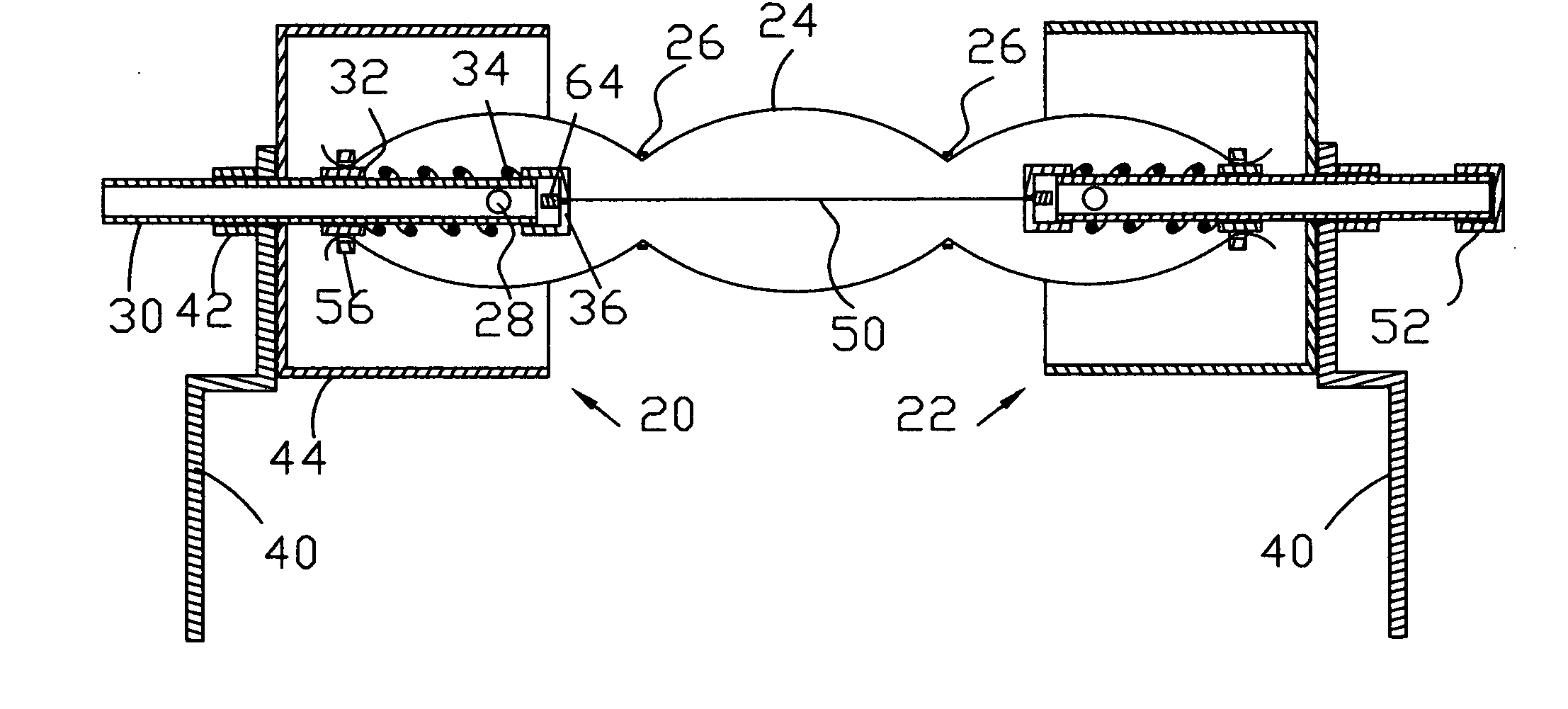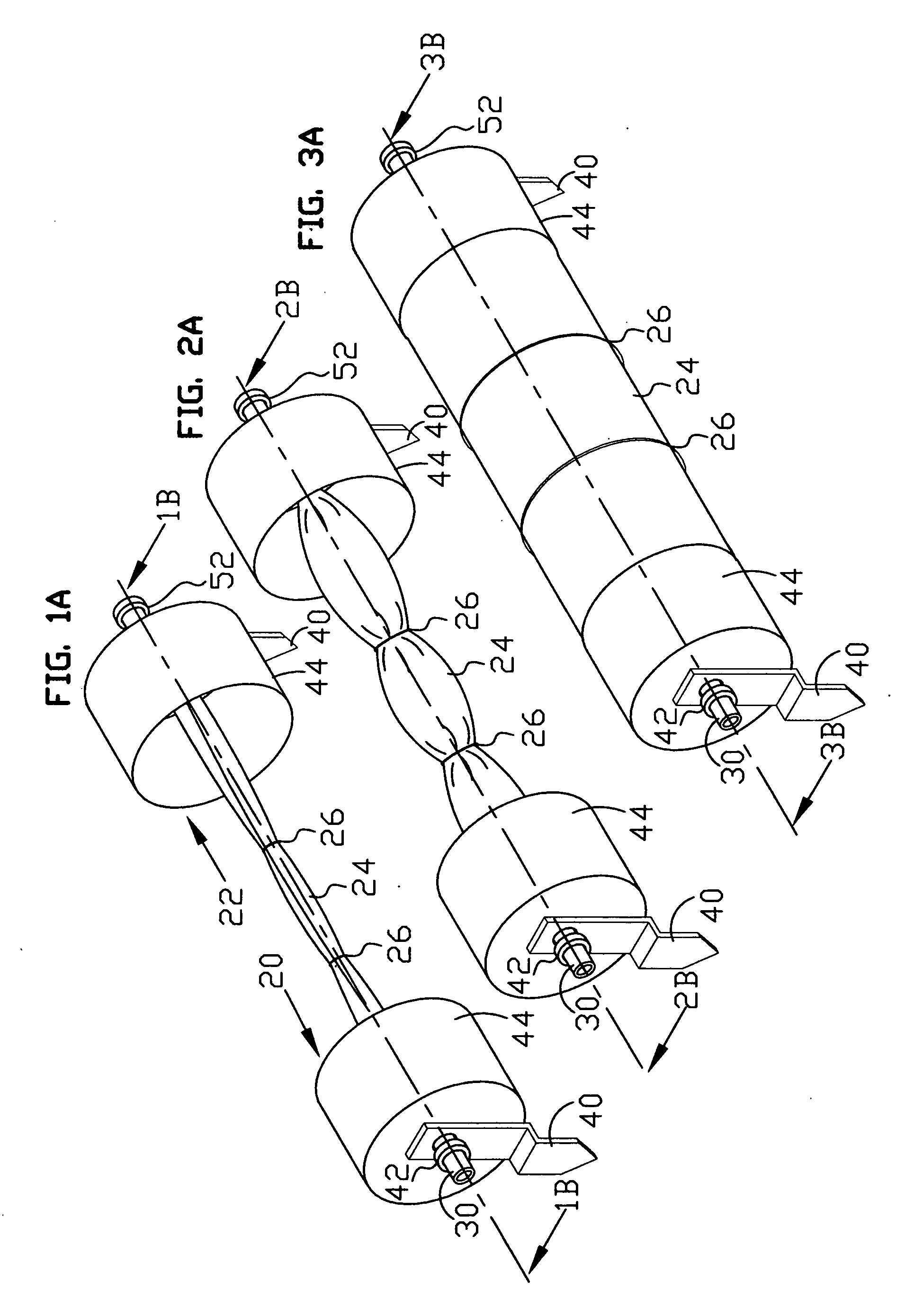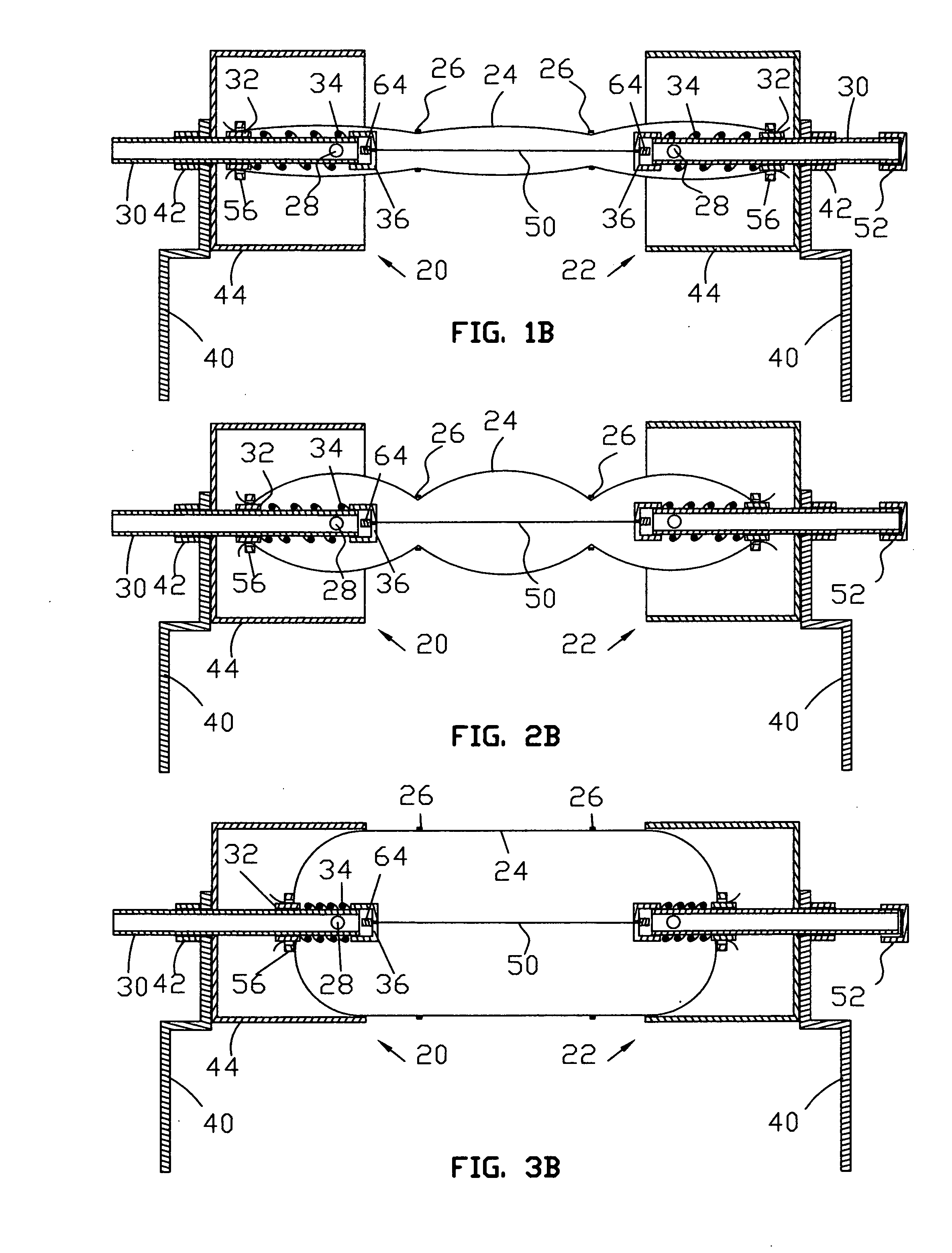Tensioned inflatable cover module
a technology of inflatable cover and spherical plate, which is applied in the direction of plant protection, building components, shaping building parts, etc., can solve the problems of limited scale or expanse of coverage of current greenhouse designs, laborious assembly of apparatuses, and small air volume enclosed by current greenhouse designs, etc., to achieve unprecedented ground and space coverage, facilitate shrinkage of length, and steady tension
- Summary
- Abstract
- Description
- Claims
- Application Information
AI Technical Summary
Benefits of technology
Problems solved by technology
Method used
Image
Examples
Embodiment Construction
Scope and Materials
[0086] The present invention relates to buildings and more particularly to a novel, modular inflatable building particularly adapted for use as a greenhouse, shelter and the like. Materials suitable for constructing the Tensioned Inflatable Cover Module are well known to those skilled in the art. Essentially one needs fasteners, inflatable tubes, cables or ropes, springs, bars, sheets and tubing. Inflatable covers for greenhouses are usually made out of polymers e.g. clear polyethylene. However, where light is not required other flexible material, e.g. fabric, opaque polymers, may be used to construct the inflatable tubes. Other components of this module can be made out of sheets, tubing and bars of metal, polymer or composite, which may be cut to size, shaped, drilled, threaded, glued, or welded for fastening. Current plumbing supplies or like products can also be used. The choice of materials is only limited by the intended use and engineering considerations a...
PUM
 Login to View More
Login to View More Abstract
Description
Claims
Application Information
 Login to View More
Login to View More - R&D
- Intellectual Property
- Life Sciences
- Materials
- Tech Scout
- Unparalleled Data Quality
- Higher Quality Content
- 60% Fewer Hallucinations
Browse by: Latest US Patents, China's latest patents, Technical Efficacy Thesaurus, Application Domain, Technology Topic, Popular Technical Reports.
© 2025 PatSnap. All rights reserved.Legal|Privacy policy|Modern Slavery Act Transparency Statement|Sitemap|About US| Contact US: help@patsnap.com



